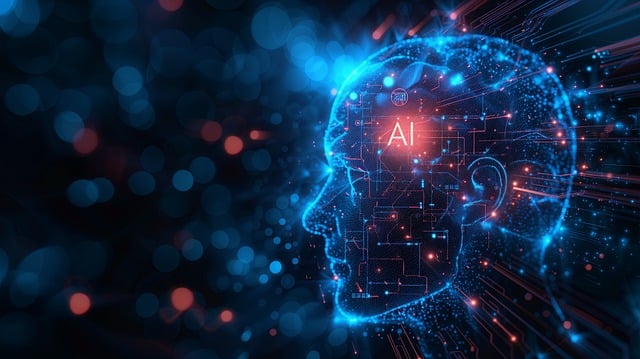How AI Models Learn: An Introduction to Training and Testing

Artificial Intelligence (AI) has become a transformative force across industries, but how do AI models learn to perform tasks such as recognizing faces, predicting trends, or translating languages? The key lies in two critical processes: training and testing. This article explores the intricacies of how AI models learn, from data preparation to model evaluation, shedding light on the methodologies that drive intelligent systems.
Table of Contents
What Does It Mean for an AI Model to Learn?
AI learning involves the process of teaching a machine to recognize patterns, make decisions, and improve over time based on data. It relies on a combination of:
- Training: The model is exposed to a dataset to learn patterns and relationships.
- Testing: The model’s performance is evaluated on new, unseen data to measure accuracy and effectiveness.
Learning in AI can be categorized into three types:
- Supervised Learning
- Unsupervised Learning
- Reinforcement Learning
The AI Model Training Process
Training an AI model involves feeding it data and iteratively improving its ability to make accurate predictions. Below are the critical steps:
Step 1: Data Collection
High-quality data is the foundation of a successful AI model. Data should be:
- Relevant to the task.
- Diverse enough to avoid bias.
- Labeled correctly for supervised learning tasks.
Example: To train an image recognition model, datasets like ImageNet provide thousands of labeled images.
Step 2: Data Preprocessing
Raw data often contains noise, errors, or irrelevant information. Preprocessing ensures the data is clean and ready for training. This includes:
- Data Cleaning: Removing duplicates, handling missing values, and correcting errors.
- Normalization: Scaling data to ensure consistent ranges.
- Data Augmentation: Generating additional data through techniques like flipping, rotating, or cropping images.
Step 3: Splitting Data into Training and Testing Sets
- Training Set: Typically 70-80% of the data, used to train the model.
- Testing Set: The remaining data, used to evaluate the model’s performance.
Sometimes, a validation set is also used to fine-tune hyperparameters.
Model Training in Depth
Defining the Algorithm
The choice of algorithm depends on the problem. Common options include:
- Linear Regression: For predicting continuous values.
- Decision Trees: For classification and regression tasks.
- Neural Networks: For complex problems like image recognition and natural language processing.
Training the Model
During training, the model learns by adjusting its parameters to minimize errors. This process includes:
Forward Propagation:
Data passes through the model, and predictions are made.Loss Function:
The error between predicted and actual values is calculated. Examples include Mean Squared Error (MSE) for regression and Cross-Entropy for classification.Backpropagation:
The model adjusts weights and biases to minimize the loss using optimization algorithms like Gradient Descent.Epochs and Iterations:
- Epoch: One complete pass through the entire training dataset.
- Iteration: A single update of the model’s parameters.
Overfitting and Underfitting
- Overfitting: The model learns too much detail, performing well on training data but poorly on new data.
- Underfitting: The model fails to capture underlying patterns in the data.
Solution: Techniques like regularization, dropout, and early stopping help balance the model’s learning.
The AI Model Testing Process
Once the training phase is complete, testing evaluates the model’s ability to generalize to unseen data.
Key Metrics for Model Evaluation
- Accuracy: Percentage of correct predictions.
- Precision: Measures the proportion of true positive predictions.
- Recall: Measures the proportion of actual positives correctly identified.
- F1 Score: A balance between precision and recall.
- Mean Absolute Error (MAE): Measures average prediction error.
Testing with New Data
Testing uses unseen data to ensure the model performs well outside the training dataset.
Example: An AI model trained to detect spam emails is tested on a separate batch of emails to measure its accuracy and false-positive rate.
The Role of Validation in AI Learning
Validation helps fine-tune the model during training to avoid overfitting. Common techniques include:
Cross-Validation
- Data is split into multiple subsets.
- The model is trained and validated on different subsets in each round.
Hyperparameter Tuning
- Adjusting parameters like learning rate, number of layers, and batch size.
- Techniques include Grid Search and Random Search.
Real-World Applications of AI Training and Testing
Healthcare
- Training: Models are trained on patient data to detect diseases like cancer.
- Testing: Evaluated on new cases to ensure accurate diagnosis.
- Training: Sensors and cameras provide data for driving models.
- Testing: The model is tested in real-world environments to ensure safety.
E-Commerce
- Training: Customer behavior data trains recommendation systems.
- Testing: Accuracy is tested by analyzing customer interactions.
Challenges in Training and Testing AI Models
Data Limitations
- Insufficient or biased data can reduce model accuracy.
Computational Resources
- Training deep learning models requires significant computing power.
Interpretability
- Complex models like neural networks can be difficult to interpret.
Emerging Trends in AI Training and Testing
Synthetic Data
Using artificially generated data to augment training datasets.
Federated Learning
Training models across decentralized devices to enhance privacy.
Automated Machine Learning (AutoML)
Streamlining the model development process with automated tools.
Conclusion:
The process of training and testing AI models is the cornerstone of building intelligent systems. By mastering these steps, developers can create models that are not only accurate but also adaptable to real-world challenges.
From selecting the right data to fine-tuning algorithms, each phase plays a crucial role in ensuring the success of AI systems. As AI continues to evolve, innovations in training and testing methodologies will drive the development of even more advanced and reliable models.
